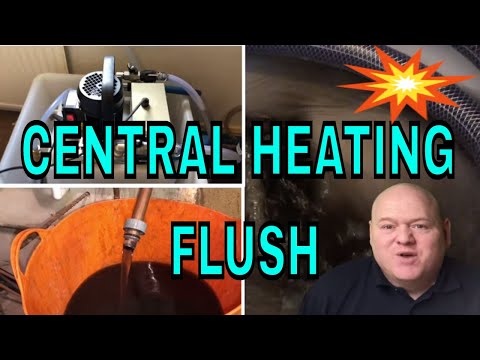POWERFLUSHING, MAGNACLEANSE, MAINS FLUSH, CHEMICAL FLUSH, How to flush a central heating system. https://cchleeds.co.uk/ Power flush, chemical flush, mains flush, Magnacleanse, flush. Let’s have a look. My name’s Allen Hart and today I’m going to talk about different types of flushing. So Jamie, Jamie Evans asked about mains flushing. So I thought I’d just put a video together of the different types of flushing. Now, what I’d say is, this video is my opinion and it’s what I do, so please read the appropriate British standards, et cetera, et cetera. That’s my disclaimer out of the way. And always make sure you’re competent as well. That’s another bit of a disclaimer. So yeah, let’s have a look at some flushing.
First of all, I’m going to show you a clip to some power flushing and then we’ll have a little chat about that. I’ll talk about Magnacleanse, I’ll talk about chemical flushes, I’ll talk about mains flushes. And if you could, please add some comments below. That’d be really helpful. It helps the video as well. Thank you.
A power flush or power flushing. So power flushing is normally the best type of flush that you can do. It’s not always needed. You don’t always need to do a full power flush, it really does depend on the system. Obviously, if the water looks like this, then you know that it’s going to need a full system power flush. The most important thing that you’re trying to do is, you’re trying to make the system clean. Now, I know that might sound obvious, but a power flush is not the be-all and end-all. The important thing is no matter what you do, no matter which flush you do, that the system is clean afterwards.
I have done a detailed video on how to do a power flush and I’ll just show you a picture of it there. If you want to search for that after this video, and then you can watch that video as well. But what we’re trying to do with a power flush is, obviously we’re trying to get the muck out of the system, but what we’re doing is we’re connecting a machine on and we’re connecting onto the flow and onto the return of the heating system, and then we’re going to put chemicals around the system.
So what we’d do, we would put chemicals in, or what I do, I normally put, I would open all the radiators on the system. I’d put the chemicals in, whatever that might be, X800, or F5, or MC3, or whatever chemicals that you’re using. And then leave that to run around the system for at least, at the very, very least one hour. Ideally, if you can, if you could put it in a few days before and let the customer run the heating, then that would be even better. And what you’re going to do then, is once you have run it round the system for at least an hour, maybe a couple of hours if you can. And then what you want to do is, you want to turn all the radiators off apart from maybe two radiators, and then see which ones in the house are the least performing, or the ones that are not working very well, and turn all the rest of the radiators in the house off.
Now, what you can do as well is, you could drain the system fully, so you’ve got all the water out of the system first. And then, when you’ve put your chemicals in, you’ve left air in the top of the radiator, and then as it’s trying to flush, the chemicals will only go round, or they will try and go around the bottom of the radiator. So they try and go through the sludge in the system, and that’s what you want, that’s what you want it to do. So as I said then, what you’re doing is you’re leaving one radiator fully open, and then often I leave a second one open just in case there’s a bit of restriction, and you don’t want hoses to blow off, because that can make a right mess if that happens.
So then, it’s just a time thing then. So you need to go round the radiators one at a time, open a radiator, turn one off, open one, turn one off. When I’ve always making sure there’s one fully open all the time so that there’s no restriction in the system. And you can also, with your power flush machine, you can turn the flow the other your way round. So it’s got a lever on the power flush machine so you can change the direction of flow. So as I say, if you click up here, if you have a look and search for that video there, it’ll give you a bit more of a detailed power flush. And if you’ve got any questions, please ask them below.
And now what we’ll do, we’ll have a look at the Magnacleanse and what the difference is with a Magnacleanse. A Magnacleanse is a magnetic filter that you connect into the heating







